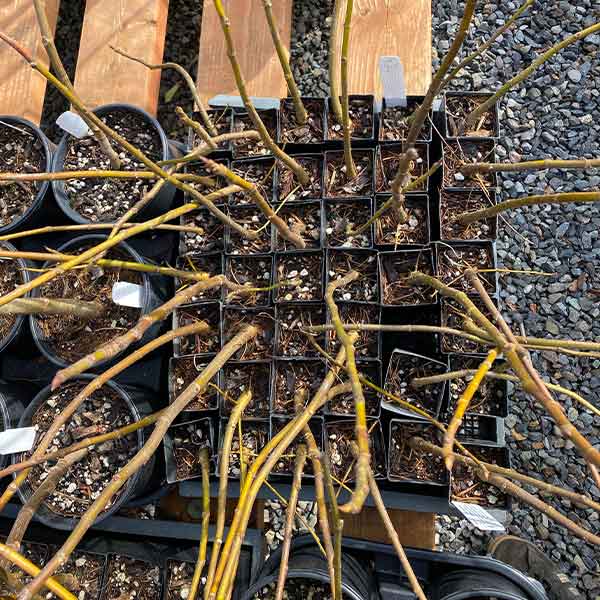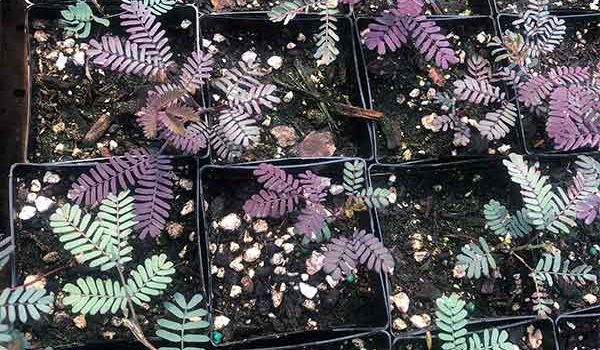
Growing Woody Plants from Seed
*be sure to scroll to the bottom for instructional video guide*
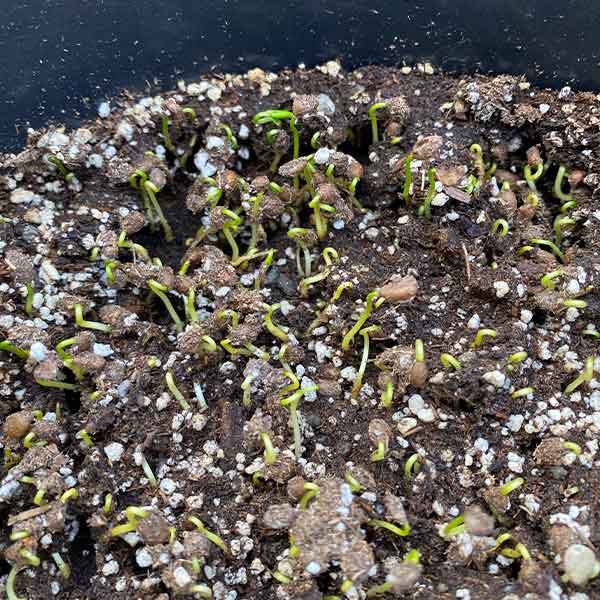
Woody trees and shrubs are frequently propagated clonally by cuttings or grafting in order to preserve the exact genetics of a particular variety, but all these plants can also be grown from seed! Propagating plants via sexual reproduction (by seed), as opposed to asexual reproduction, gives you brand new genetics to observe and select from. Though not all seedlings will be obviously different from the parents, and some, called nucellar seedlings, might be nearly identical, each batch of seedlings will have slight differences from each other given the genetics of the parents. This is the basis of all traditional plant breeding and how every variety we now cherish and reproduce clonally was born. They all started with a single seedling. Some may have been found in the wild and some may have been intentional hybrids, but every great variety starts with a seedling.
But before we go down the rabbit hole of breeding your own woody plants, let’s dive in to the different ways to start woody plants from seed. You don’t have to be a plant breeder or a professional propagator to start your own woody trees and shrubs from seed, and adding a little bit of diversity to our gardens and our world is always a wonderful thing!
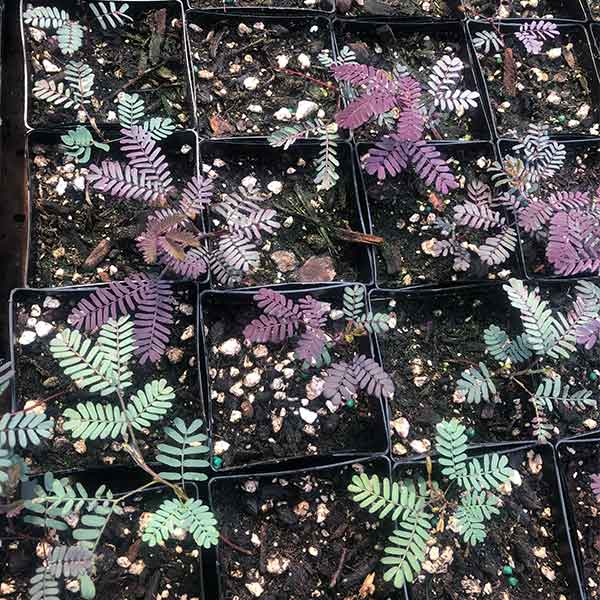
Cracking the code on seed dormancy
Seeds can lay dormant in the soil for years before conditions are optimal for their germination. All the genetic information the seed will ever need, along with stored energy from the mother plant, are all packed inside the protective seed coat. Germinating at the wrong time could prove fatal, or at least sub-optimal, for a young seedling so each species has its own ideal conditions it waits for before germinating. The influence of temperature and moisture are typically the ones we think of first, but passing through the digestive system of a bird, being carried in a flood, getting scraped by rocks, or sensing that a fire has just burned through an area are some of the other factors that can influence a seed’s germination.
In the nursery and in the garden we desire very uniform germination, rather than the sporadic germination of seeds that frequently occurs in the wild. Because of this, we’ve adopted a number of techniques to mimic the natural forces that cause a seed to germinate.
Cold stratification
For us growers in temperate or cold climates, the influence of winter on a seed has a great influence on its germination. Many seeds from cooler climates require the presence of both cold and moisture in order to germinate. These species don’t find it advantageous to germinate with the first rainfall of autumn or in the middle of a harsh winter so they wait out their time until spring comes, or perhaps partway through winter to germinate. Plants from Mediterranean climates might find it most advantageous to germinate in fall and grow as much as possible during the mild, wet winter before summer drought comes. And plants from more tropical climates will often have no dormancy period based on cold and be ready to germinate immediately. Knowing a bit about the natural history of whatever plant you’re dealing with is always helpful.
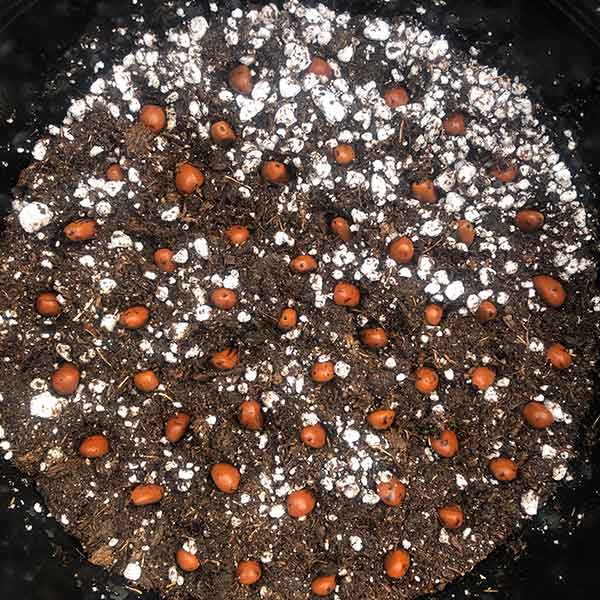
Scarification
Scarification is the action of breaking through the seed coat, either through chemical or mechanical means, in order to make the seed coat more permeable to water and begin the process of germination. When we do this, we’re usually imitating the passing of the seed through a digestive system, or being rolled around on rocks and soil before germination can occur. There are many ways of doing this, including the use of acids, gibberellic acid is a common one, or physically nicking the seed coat with a file, sand paper, or whatever abrasive object you have on hand. Pouring hot water on the seed, often after nicking or scarring the seed, and letting them soak in the hot water is another very effective way of scarifying the seed.
Smoke treatment
Many of our favorite plants come from climates where fire has a frequent presence in the climate. Plants from these areas are well adapted to fire and will often sprout back vigorously from the roots after a fire, have fire resistant bark, or contain seeds that germinate only once a fire has passed through. Though fires can be damaging and frightening, the germination of many years worth of seeds after a fire is incredible. To replicate the presence of fire it isn’t necessary to start a greenhouse fire or burn some newspaper over your pots as there are many smoke treatment products for sale from seed companies now to help treat your seeds. Once the seed coat has soaked up the chemicals commonly found in smoke the process of germination can begin.
Sunlight and time of season
Seeds react to how much light is hitting them and many require bright light in order to germinate. This means that you must not cover them with any media, or cover them only very slightly in order to ensure they receive enough light to signal germination. Also, while it is often tempting to start your seeds very early in the season to get a head start on spring, some species detest the low light levels of winter and will get elongated and quickly dampen off during the cool wet months. We fall prey to this temptation every season, so be sure to do your research before you start your seeds.
Patience
Thought not always the most immediately satisfying answer, sometimes seeds just take a long time to germinate. Though we may think we have provided the optimal conditions for them, sometimes they just don’t want to germinate! This can be incredibly frustrating after you’ve carefully watered and watched the same empty tray for over a year. And as luck would have it, as soon as you decide to toss that seed tray in the compost bin, they’ll typically when they decide to germinate. Go figure.
Growing perennial plants from seed is incredibly rewarding, and depending on where your seed came from you can happen upon some amazing and unique phenotypes in your seedlings. Start experimenting with collecting your own seed from fruits you really love, or that Mahonia shrub on the corner that is loaded with fruit. Seeds are everywhere and are often quite cheap and few garden activities are as rewarding as seeing those tricky seeds you’ve been waiting on for months to germinate finally poke their little cotyledons up towards the sun! Or knowing that the towering eucalyptus you’re lounging under in the summer started with just a teeny tiny seed! Look for variations in your seed lots, start making your own crosses and let the good times and diversity grow!
